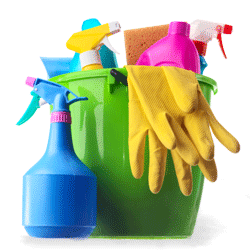Cleaning and Disinfection
- How can I keep my hands clean to prevent the spread of germs like MRSA?
- How can I clean and disinfect surfaces to prevent MRSA infection?
- What should I clean to prevent MRSA from spreading?
- Which disinfectants should I use against MRSA?
- How should I use cleaners and disinfectants?
- How should I clean laundry, equipment and difficult surfaces to stop MRSA from spreading?
- Is it clean?
Methicillin-resistant Staphylococcus aureus (MRSA) can survive on some surfaces, like towels, razors, furniture, and athletic equipment for hours, days, or even weeks. It can spread to people who touch a contaminated surface, and MRSA can cause infections if it gets into a cut, scrape, or open wound.
Keeping your hands clean is one of the most important steps you can take to avoid getting sick and spreading germs like MRSA. Use soap and water to clean your hands if available. After wetting your hands and adding soap, scrub your hands for at least 20 seconds. If you cannot access soap and water, use an alcohol-based hand sanitizer that contains at least 60% alcohol to clean hands. Apply the sanitizer to one hand, rub your hands together, trying to cover all surfaces of your hands and fingers until your hands are dry.
- Cleaners or detergents are products that remove soil, dirt, dust, organic matter, and germs (like bacteria, viruses, and fungi). They lift dirt and germs off surfaces so they can be rinsed away with water. Cleaning with a detergent is necessary to remove dirt that can prevent disinfectants from working. Some disinfectants have a cleaning agent mixed in, check the label to know which product you have.
- Disinfectants are chemical products that are used to kill germs in healthcare settings. Disinfectants effective against Staphylococcus aureus, or staph, are also effective against MRSA. The disinfectant’s label should have a list of germs that the product can kill, along with an Environmental Protection Agency (EPA) registration number. These products are also sold at grocery and other retail stores and may be helpful when someone has an infected wound.
When cleaning and disinfecting, focus on surfaces that frequently contact people’s bare skin like desks, chairs, benches, gym equipment, lockers, faucets, light switches and remote controls. In particular, clean any surfaces that could come into contact with uncovered wounds, cuts, or boils. In addition to cleaning surfaces, frequently cleaning hands and keeping wounds covered keeps MRSA from spreading.
Large surfaces, such as floors and walls, have not been associated with the spread of staph and MRSA. There is no evidence that spraying or fogging rooms or surfaces with disinfectants will prevent MRSA infections more effectively than the targeted approach of cleaning frequently touched surfaces and surfaces that have been exposed to open wounds.
Check the disinfectant product’s label on the back of the container. Most, if not all, disinfectant manufacturers will provide a list of germs on their label that their product can destroy. Disinfectants effective against Staphylococcus aureus or staph are also effective against MRSA. These products are readily available from grocery stores and other retail stores.
The EPA provides a list of EPA-registered products effective against MRSAExternal
Read the label first. Each cleaner and disinfectant has instructions that tell you important facts:
- Precautions you should take when applying the product, such as wearing gloves or aprons or making sure you have good ventilation during application.
- How to apply the product to a surface.
- Instructions on how to prepare (e.g., dilute) if the product is a concentrate.
- How long you need to leave it wet on the surface to be effective (contact time).
- If the surface needs to be cleaned first and rinsed after using.
- If the product is safe for the surface.
- EPA-registered disinfectants with a label claim for Staphylococcus aureus will also kill MRSA.

Read the label first. Each cleaner and disinfectant has instructions for proper use.
Laundry
Routine laundry procedures, detergents, and laundry additives will all help to make clothes, towels, and linens safe to wear or touch. If items have been contaminated by infectious material, these may be laundered separately, but this is not absolutely necessary. Dry laundry in a dryer, if available.
More about laundry on this website
Equipment
Shared equipment that comes into direct skin contact such as helmets and protective gear should be cleaned after each use and allowed to dry. Equipment should be cleaned according to the equipment manufacturers’ instructions to make sure the cleaner will not harm the item.
More about Cleaning & Disinfecting Athletic Facilities for MRSA on this website
Keyboards and other Difficult Surfaces
Many items such as computer keyboards or handheld electronic devices may be difficult to clean or disinfect because they could be damaged if they became wet. If these items are touched by many people during the course of the day, a cleanable cover/skin (e.g., keyboard skin) could be used on the item to allow for cleaning while protecting the item. Always check to see if the manufacturer has instructions for cleaning.
Even when a surface appears visibly clean, it can still have germs. To protect yourself from germs on shared surfaces you can:
- Use barriers, like a towel or clothing, between your skin and the surface.
- Shower immediately after activities where you have direct skin contact with people or shared surfaces or equipment, such as after exercising at a health club.
- Clean your hands regularly with soap and water or an alcohol-based sanitizer.
- Keep cuts and scrapes clean and covered with bandages or dressing until healed.
These precautions are especially important in locker rooms, gyms, and health clubs.